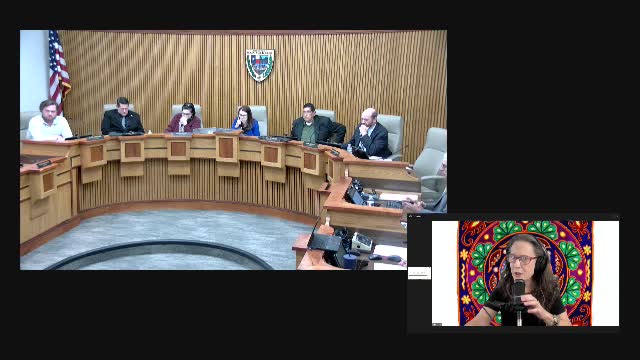City Hall mural sparks debate over religious freedom and art
October 15, 2024 | San Marcos City, Hays County, Texas
This article was created by AI summarizing key points discussed. AI makes mistakes, so for full details and context, please refer to the video of the full meeting. Please report any errors so we can fix them. Report an error »

During a recent government meeting, a heated discussion emerged regarding the mural displayed at City Hall, which some attendees argue violates the First Amendment rights of various religious groups, particularly Native American faiths. A speaker highlighted the geometric designs in the mural, questioning their secular nature and asserting that they represent a form of religious expression tied to peyote art.
The speaker criticized the city for what they perceive as a bias against Native American spirituality, suggesting that the mural's imagery, which includes elements associated with hallucinogenic substances, should not be dismissed as mere decoration. They argued that the mural is not only religious but also reflects a broader issue of cultural insensitivity, pointing to the city's history of destroying Native American artifacts and human remains during construction projects.
The speaker emphasized their long-standing commitment to protecting cultural heritage, citing decades of advocacy through various platforms, including speeches and public forums. This discussion raises important questions about the intersection of art, religion, and cultural representation in public spaces, as well as the responsibilities of local governments in honoring diverse spiritual traditions.
The speaker criticized the city for what they perceive as a bias against Native American spirituality, suggesting that the mural's imagery, which includes elements associated with hallucinogenic substances, should not be dismissed as mere decoration. They argued that the mural is not only religious but also reflects a broader issue of cultural insensitivity, pointing to the city's history of destroying Native American artifacts and human remains during construction projects.
The speaker emphasized their long-standing commitment to protecting cultural heritage, citing decades of advocacy through various platforms, including speeches and public forums. This discussion raises important questions about the intersection of art, religion, and cultural representation in public spaces, as well as the responsibilities of local governments in honoring diverse spiritual traditions.
View full meeting
This article is based on a recent meeting—watch the full video and explore the complete transcript for deeper insights into the discussion.
View full meeting
